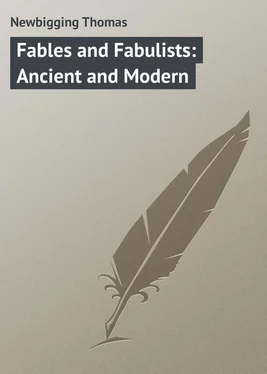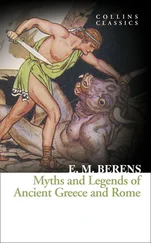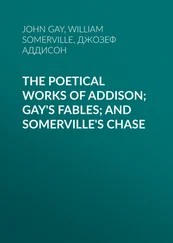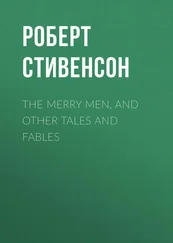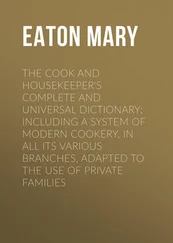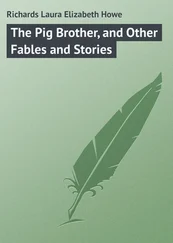Thomas Newbigging - Fables and Fabulists - Ancient and Modern
Здесь есть возможность читать онлайн «Thomas Newbigging - Fables and Fabulists - Ancient and Modern» — ознакомительный отрывок электронной книги совершенно бесплатно, а после прочтения отрывка купить полную версию. В некоторых случаях можно слушать аудио, скачать через торрент в формате fb2 и присутствует краткое содержание. Жанр: foreign_prose, на английском языке. Описание произведения, (предисловие) а так же отзывы посетителей доступны на портале библиотеки ЛибКат.
- Название:Fables and Fabulists: Ancient and Modern
- Автор:
- Жанр:
- Год:неизвестен
- ISBN:нет данных
- Рейтинг книги:5 / 5. Голосов: 1
-
Избранное:Добавить в избранное
- Отзывы:
-
Ваша оценка:
- 100
- 1
- 2
- 3
- 4
- 5
Fables and Fabulists: Ancient and Modern: краткое содержание, описание и аннотация
Предлагаем к чтению аннотацию, описание, краткое содержание или предисловие (зависит от того, что написал сам автор книги «Fables and Fabulists: Ancient and Modern»). Если вы не нашли необходимую информацию о книге — напишите в комментариях, мы постараемся отыскать её.
Fables and Fabulists: Ancient and Modern — читать онлайн ознакомительный отрывок
Ниже представлен текст книги, разбитый по страницам. Система сохранения места последней прочитанной страницы, позволяет с удобством читать онлайн бесплатно книгу «Fables and Fabulists: Ancient and Modern», без необходимости каждый раз заново искать на чём Вы остановились. Поставьте закладку, и сможете в любой момент перейти на страницу, на которой закончили чтение.
Интервал:
Закладка:
Thomas Newbigging
Fables and Fabulists: Ancient and Modern
CHAPTER I
DEFINITION OF FABLE
'Read my little fable,
He that runs may read.'
'As clear as a whistle.'
The term 'fable' is used in two senses, with two distinctive meanings.
First, as fabulæ , it is employed to denote the myths or fictions which, by the aid of imagination and superstition, have clouded, or have become blended with, the history of the remote past. Such are the stories related of Scandinavian and Grecian heroes and gods; beings, some of whom doubtless had an actual human existence, and were wise and valiant and powerful, or the reverse, in their day, but around whose names and persons have clustered all the marvellous legends that are to be found in mythological lore. The better name for these is 'romance.'
Secondly, as fabellæ , it is used to signify a special branch of literature, in which the imagination has full play, altogether unassisted by superstition in any shape or form. The fabulist confers the powers or gifts of reason and speech on the humbler subjects over whom he exercises sway, and so has ample scope for his imaginative faculty; but there is no attempt on his part at any serious make-believe in his inventions. On the contrary, there is a tacit understanding between him and his hearers and readers, that what he narrates is only true in the sense of its application to corresponding circumstances in human life and conduct.
It is with fable as understood in this latter sense that we propose to deal.
The Fable or Apologue has been variously defined by different writers. Mr. Walter Pater, paraphrasing Plato's definition, says that 'fables are medicinable lies or fictions, with a provisional or economized truth in them, set forth under such terms as simple souls can best receive.' 1 1 'Plato and Platonism,' by Walter Pater. London: Macmillan and Co., 1893, p. 225.
The sophist Aphthonius, taking the same view, defines the fable as 'a false discourse resembling truth.' 2 2 Aphthonius flourished at Antioch, at what time is uncertain. Forty of his Æsopian fables, with a Latin version by Kimedoncius, were printed from a MS. in the Palatine Library at the beginning of the seventeenth century. 'The Æsopian Fable,' by Sir Brooke Boothby, Bart. Edinburgh: Constable and Co., 1809. Preface, p. xxxi.
The harshness of both these definitions is scarcely relieved by their quaintness. To assert that the fable is a lie or a falsehood does not fairly represent the fact. A lie is spoken with intent to deceive. A fable, in its relation, can bear no such construction, however exaggerated in its terms or fictitious in its characters. The meanest comprehension is capable of grasping the humour of the situation it creates. Even the moral that lurks in the narration is often clear to minds the most obtuse. This is at least true of the best fables.
Dr. Johnson, in his 'Life of Gay,' remarks that 'A fable or epilogue seems to be, in its genuine state, a narrative in which beings irrational, and sometimes inanimate — quod arbores loquantur, non tantum feræ 3 3 'Even trees speak, not only wild beasts.' – Phædrus, Book i., Prologue.
– are, for the purpose of moral instruction, feigned to act and speak with human interests and passions.'
Dodsley says that ''tis the very essence of a fable to convey some moral or useful truth beneath the shadow of an allegory.' 4 4 'Essay on Fable.'
Boothby defines the fable as 'a maxim for the use of common life, exemplified in a short action, in which the inhabitants of the visible world are made the moral agents.' G. Moir Bussey states that 'the object of the author is to convey some moral truth to the reader or auditor, without usurping the province of the professed lecturer or pedant. The lesson must therefore be conveyed in an agreeable form, and so that the moralist himself may be as little prominent as possible.' 5 5 'Fables Original and Selected,' by G. Moir Bussey. London: Willoughby and Co., 1842.
Mr. Joseph Jacobs says that 'the beast fable may be defined as a short humorous allegorical tale, in which animals act in such a way as to illustrate a simple moral truth or inculcate a wise maxim.' 6 6 'The Fables of Æsop,' as first printed by William Caxton in 1484. London: David Nutt, 1889, vol. i., p. 204.
These various definitions or descriptions apply more especially to the Æsopian fable (and it is with this that we are dealing at present), which is par excellence the model of this class of composition. Steele declares that 'the virtue which we gather from a fable or an allegory is like the health we get by hunting, as we are engaged in an agreeable pursuit that draws us on with pleasure, and makes us insensible of the fatigues that accompany it.' 7 7 'The Tatler,' No. 147, vol. iii., p. 205.
This is applied to the longer fable or epic, such as the 'Iliad' and 'Odyssey' of Homer, or the 'Faerie Queen' of Spenser, rather than to the fable as the term is generally understood, otherwise the simile is somewhat inflated.
One more definition may be attempted:
The Æsopian fable or apologue is a short story, either fictitious or true, generally fictitious, calculated to convey instruction, advice or reproof, in an interesting form, impressing its lesson on the mind more deeply than a mere didactic piece of counsel or admonition is capable of doing. We say a short story, because if the narration is spun out to a considerable length it ceases to be a true fable in the ordinary acceptation of the term, and becomes a tale, such, for example, as a fairy tale. Now, a fairy or other fanciful tale usually or invariably contains some romance and much improbability; it often deals largely in the superstitious, and it is not necessarily the vehicle for conveying a moral. The very opposite holds good of a fable. Although animals are usually the actors in the fable, there is an air of naturalness in their assumed speech and actions. The story may be either highly imaginative or baldly matter-of-fact, but it never wanders beyond the range of intuitive (as opposed to actual or natural) experience, and it always contains a moral. In a word, a fable is, or ought to be, the very quintessence of common sense and wise counsel couched in brief narrative form. It partakes somewhat of the character of a parable, though it can hardly be described as a parable, because this is more sedate in character, has human beings as its actors, and is usually based on an actual occurrence.
Though parables are not fables in the strict and limited meaning of the term, they bear a close family relationship to them. Parables may be defined as stories in allegorical dress. The Scriptures, both old and new, abound with them. The most beautiful example in the Old Testament is that of Nathan and the ewe lamb, 8 8 2 Samuel xii. 1-7.
in which David the King is made his own accuser. This was a favourite mode of conveying instruction and reproof employed by our Lord. Christ often 'spake in parables'; and with what feelings of reverential awe must we regard the parables of the Gospels, coming as they did from the lips of our Saviour!
CHAPTER II
CHARACTERISTICS OF FABLES
'To hold, as 'twere, the mirror up to Nature.'
There is an archness about the best fables that creates interest and awakens curiosity; and it is the quality of such that, whilst simple enough as stories to be understood and enjoyed by the young, they are at the same time calculated to interest, amuse, instruct and admonish those more advanced in years.
Читать дальшеИнтервал:
Закладка:
Похожие книги на «Fables and Fabulists: Ancient and Modern»
Представляем Вашему вниманию похожие книги на «Fables and Fabulists: Ancient and Modern» списком для выбора. Мы отобрали схожую по названию и смыслу литературу в надежде предоставить читателям больше вариантов отыскать новые, интересные, ещё непрочитанные произведения.
Обсуждение, отзывы о книге «Fables and Fabulists: Ancient and Modern» и просто собственные мнения читателей. Оставьте ваши комментарии, напишите, что Вы думаете о произведении, его смысле или главных героях. Укажите что конкретно понравилось, а что нет, и почему Вы так считаете.
